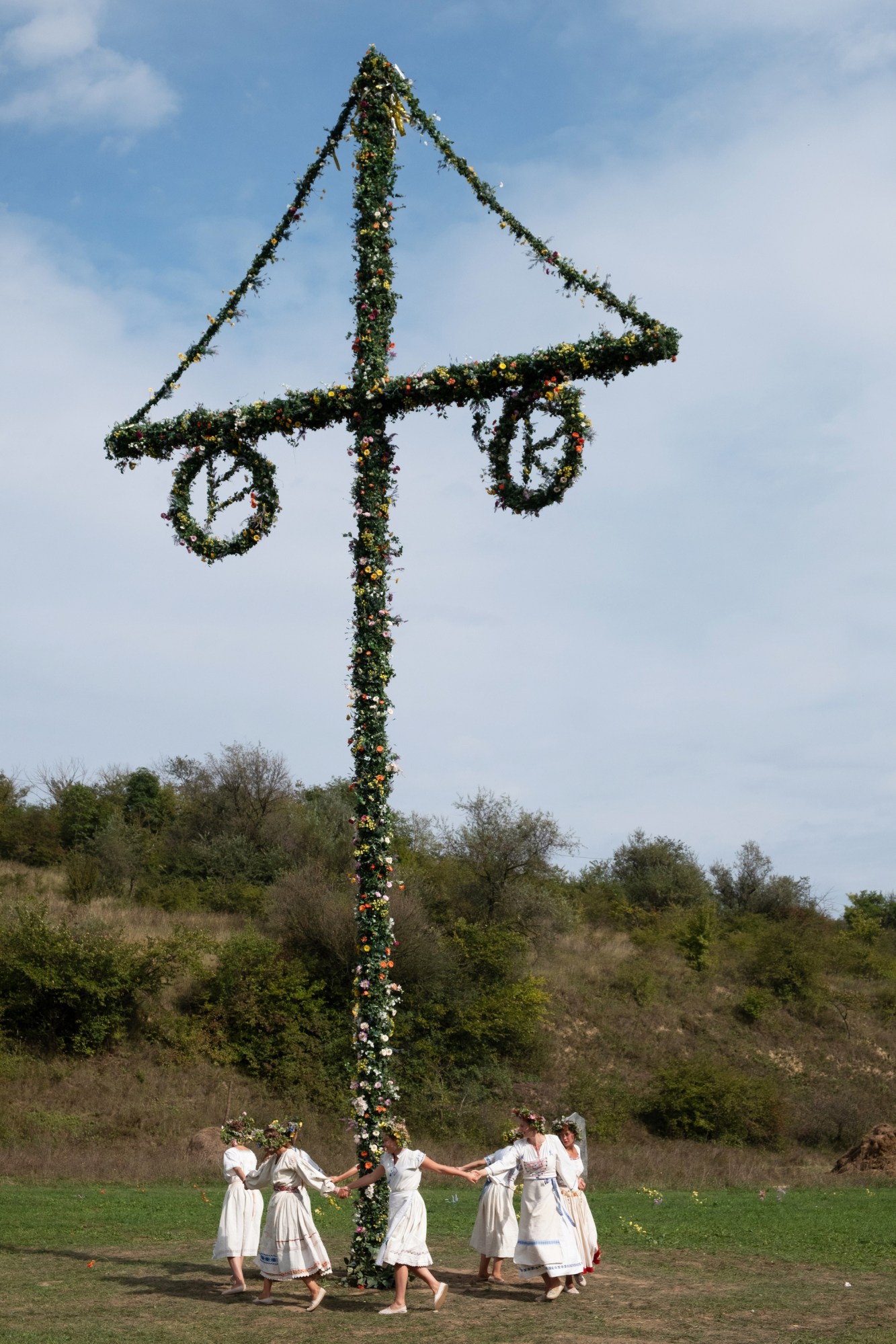Midsommar, Ari Aster’s blitzkrieg of a breakup movie, isn’t scary. It’s horrifying, harrowing and ultimately punishing, but audiences looking for classic jump scares will be left wanting. This is purposeful. The movie trades things that go bump in the night for a feeling of gradual dread that sets in almost immediately, packing the emotionally devastating family trauma of Hereditary, Aster’s last feature, into the first ten minutes, and using it as a springboard for everything unsettling to come.
The movie follows Dani, played by the ascendant Florence Pugh, and opens as the twenty-something is grieving an unthinkable tragedy. Dani invites herself on a trip to Sweden with her boyfriend Christian (Jack Reynor) and his friends, where they plan to participate in Midsommar — a pastoral pagan festival in the Swedish countryside that celebrates summer solstice. Their relationship, which was already on the rocks, is now an obligatory shell of a partnership, made all the worse by Christian’s fuckboi passivity and deep-seated indifference to Dani’s trauma.

After arriving at the remote festival grounds and introducing themselves to the curiously kind townsfolk, Dani and crew are privy to Midsommar traditions that become increasingly disturbing. Meanwhile the movie ratchets up the dread by allowing Sweden’s midnight sun to keep all of the horror in direct light, eschewing the traditional horror trope of dark rooms and shadow cloaked terrors. As the non-native visitors start to disappear and the true nature of the festival becomes apparent, Aster keeps the narrative grounded in a deeply unsettling reality. The horrific underbelly of the festival slowly reveals itself with logical inevitability and it’s all the more upsetting for it.
All of this is to say that Midsommar, which is fantastic, taps into a new and crushingly relevant type of horror — one of a creeping and ever-present dread, wherein emotional connections and one’s relationship to the world are constantly deteriorating. The ghostly apparitions and string swells of modern horror hits, like those from The Conjuring universe, are nowhere to be found. Instead the movie instills true fear through a sense of punishingly logical chaos, which prevents viewers from ever feeling remotely secure in the characters’ wellbeing. Not only is this intentional, but it’s depressingly relevant.

The horrors of the real world are as alive and apparent as they’ve ever been. As I watched the fictional cruelty in Midsommar, I couldn’t stop thinking about the persistent dread of the last three-ish years. This is the horror that Aster taps into and wears like the movie’s climactic bear suit, pushing the subjugation of a woman silently screaming for help and loudly crying in anguish right into our collective face. We’re forced to watch as the men around her treat her as less than — as an over-reactive shrew. She is the only one who sees the situation curdling, but her learned practice of deferment keeps her stuck in a place she knows is dangerous.
Crowds seem to be embracing horror as the world begins its burning; ticket sales for the genre are on a shockingly distinct uptick over the last few years. The movie-going public is leaning into it like a teenager mainlining Bright Eyes after a breakup. Sometimes it feels good to wallow. Sometimes staring at the sun is the only way to appreciate its brightness. Sometimes that will make you go blind.
Picasso’s anti-war classic “Guernica,” which he painted after the bombing of the Basque town during World War II, is one of the most well known pieces of political art ever made. In it, humans and animals take on a grotesque form as their respective suffering overwhelms them. They are caught in a snapshot of anguish, the actualization of the horrors of war captured in its heartbreaking intimacy. Though we don’t face bombs, the rights and stability of those already granted less agency than the ruling class are on the run, stolen in the night by a conservative movement that no one seemed to see coming.

Women are subjugated with a regularity whose frequency is so high as to become normal and often unnoticeable. This forced horror is captured similarly in Midsommar, as it is in Picasso’s masterpiece. Oversized and run through with real terror and hurt, they mirror each other. The pain forced upon the unsuspecting public is the byproduct of a government making devastating and deadly decisions for said public. An abortion ban is a bomb is a President who casually rapes women in dressing rooms is a dance around the Midsommar maypole where the last one standing is crowned Queen.
The film ends with an act of radical empathy, a twisted grin of absolution that affirms Dani’s power for the first time. It reads as brutal hope. If existential horror is the order of the day, Aster has made an era-defining masterpiece. If viewers continue to lean into the cleverly metaphor driven fear fests on display at cinemas and on streaming services in order to contextualize the real and actual horror of modern political life, let’s hope that they’re as bleak and cathartic as Aster’s opus. Let’s hope they don’t have to.
